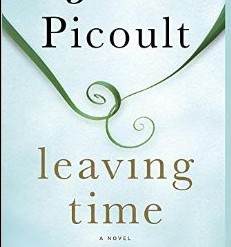Crafting a Compelling Story Premise
UPCOMING: I’m doing a workshop on crafting a terrific premise on January 11, 2-4 p.m. Pacific Time (it will be recorded, so you can watch it later if you can’t attend). Space is limited, so be sure to enroll ASAP. And bring your premise statement to share and get feedback on it!
Below is a reprint of a post I wrote a few years back, published again here to help you understand what a premise is and why it’s so important to come up with one that is fresh and compelling!
Most writers are clear about the inciting incident or initial disturbance that has to come near the start of the book. Yet, I see way too many novels in which there really isn’t a strong impacting incident. Or it’s in the wrong place.
I recently did a fifty-page critique on a novel (which wasn’t the author’s first novel either) that had fifty pages of setup. Backstory. Telling all about how the characters met, fell in love, got married, etc. What was the stated premise? Basically, it told of a man who has something precious taken from him and must face danger and horror to get that thing back. Huh? What did the first fifty pages have to do with any of that? Nothing.
That inciting incident wasn’t there. I imagine it shows up at some point later, but that’s way too late. The inciting incident has to come at the start of the story. It launches the story. Catapults it. You don’t want your story sitting in that little catapult bucket for weeks just waiting for someone to hit the lever and send it flying.
A ship’s voyage begins when it’s launched. Not when it’s sitting dry-docked for weeks, waiting.
Every great story is about some character in his ordinary world that gets veered off in a new or specific direction due to some incident. Michael Hauge nicely calls this an opportunity. Life is moving along and suddenly an opportunity presents itself, for good or ill—or both.
Whether it’s a parent’s kid getting kidnapped, a violent storm blowing into town, a ship of mutant dinosaurs or zombies that land on shore, or a young woman meeting a hot man, novels need that inciting incident to launch the premise.
Getting a Handle on the Premise
And what’s the premise? That’s the situation that calls for someone to do something about it.
A premise presupposes a situation. Someone with a reason, drive, need, compulsion—needs to deal with that situation.
You can fashion a premise by asking “What if?” What if a comet was about to hit Earth and scientists had to find a way to stop it? That idea makes way for a premise (situation setup), which makes way for a one-sentence story concept.
How do you go from premise to that important story concept? By adding in those key corner pillars of novel construction: the protagonist and his goal and the conflict with high stakes.
It’s so important writers understand this important structure of novels. Sure, this is going to vary a bit, but in every genre, novel structure is key. The stronger the foundation of a story, the better chance it will hold up.
And one of the keys to a strong foundation is that strong premise.
You Gotta Have Goal
If you don’t have a protagonist set up to go after some goal for the novel—a goal that veers the protagonist in a new direction by that inciting incident—you are going to have a hard time putting a solid novel together.
Yes, that sounds simplistic. It is. But I will stand by my belief that every great novel is about someone with passion going after a goal. And the premise that’s set up (the situation that needs remedying) is all about, yes, that character trying to reach his goal.
I know some of you are getting sick of hearing this from me. I’ve written countless blog posts and writing craft books centering on this, but I do so for a reason. Seriously, if even half the manuscripts I edited and critiqued had a clear, strong premise featuring a protagonist going passionately after a goal, I would not write so much about this. In fact, I’d jump up and down and sing silly little songs if even half of those manuscripts had this very basic and necessary foundation.
So, if you don’t have this understanding down, spend some time reading those blog posts and studying those books until you get it. You need to be able to write a one-sentence story concept (yes, one sentence) that tells the premise of your novel, featuring that protagonist and his goal, and what conflict or primary opposition he’s facing.
Example from Harry Potter and the Sorcerer’s Stone (via Randy Ingermanson): “A boy wizard begins training and must battle for his life with the Dark Lord who murdered his parents.”
Some call this a one-sentence pitch, a logline (usually for scripts). Scriptlogist.com makes this suggestion:
Here are three questions to ask yourself as you write your logline:
- Who is the main character and what does he or she want?
- Who (villain) or what is standing in the way of the main character?
- What makes this story unique?
I like Nathan Bransford’s simplified formula for a one-sentence pitch: “When [opening conflict] happens to [character(s)], they must [overcome conflict] to [complete their quest].”
I’m going over all this for one specific reason: we’re about to take a look at my 10-20-30 Scene Builder concept that I’ve been putting together for novelists, to help create a cohesive road map that can be used to build a solid novel.
The most challenging aspect of novel writing, to me is what to do with all those cool scene ideas and developments. When brainstorming my novels, I often have pages of notes and index cards. I have a ton of great scene ideas that have conflict and show progress and hindrance as the hero or heroine of my story strives to reach the goal.
But then comes the part when I have to lay it all out in the best and strongest fashion.
While I now do a lot of this intuitively after writing a lot of novels, I still need to break down the action into sections in a manageable way.
And this brings me to the basic framework we’re going to start looking at next week—the five key turning points in your novel (based on Michael Hauge’s story structure). Along with your inciting incident (turning point #1), we’ll take a look at the four other key developments in your story, and with those you’ll get a look at those first ten key scenes you need to plan out to begin the framework of your story.
So, first and foremost: get your premise clear and strong. Practice writing out your one-sentence story concept. If you can’t for the life of you figure out what your protagonist is after or what the central conflict is, you more than likely don’t have a strong concept, or maybe even a premise. And that’s a big problem.
If you are stuck and need help, hire me. Let’s work on this. You may have a very cool idea, but ideas are lumps of clay. They are just sitting on the table like blobs of nothing unless we turn them into powerful concepts. And be sure to sign up for the premise workshop on January 11, 2023!
Here’s a clip of former literary agent Jonny Geller talking about the one-sentence story concept.











